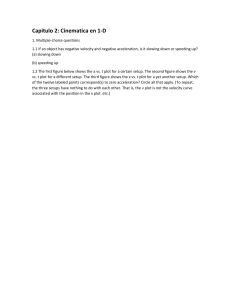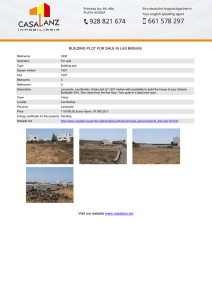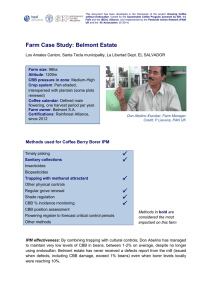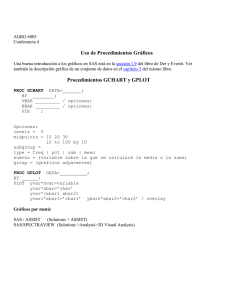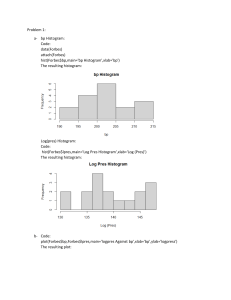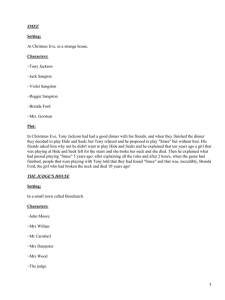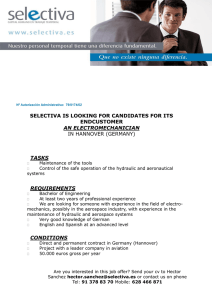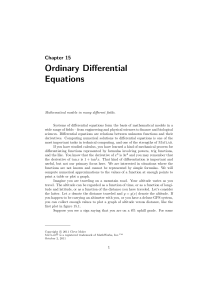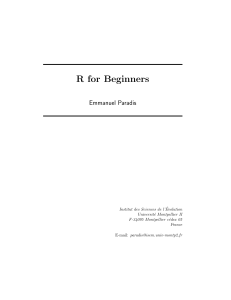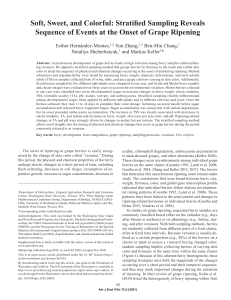La Lila - 4C Association
Anuncio
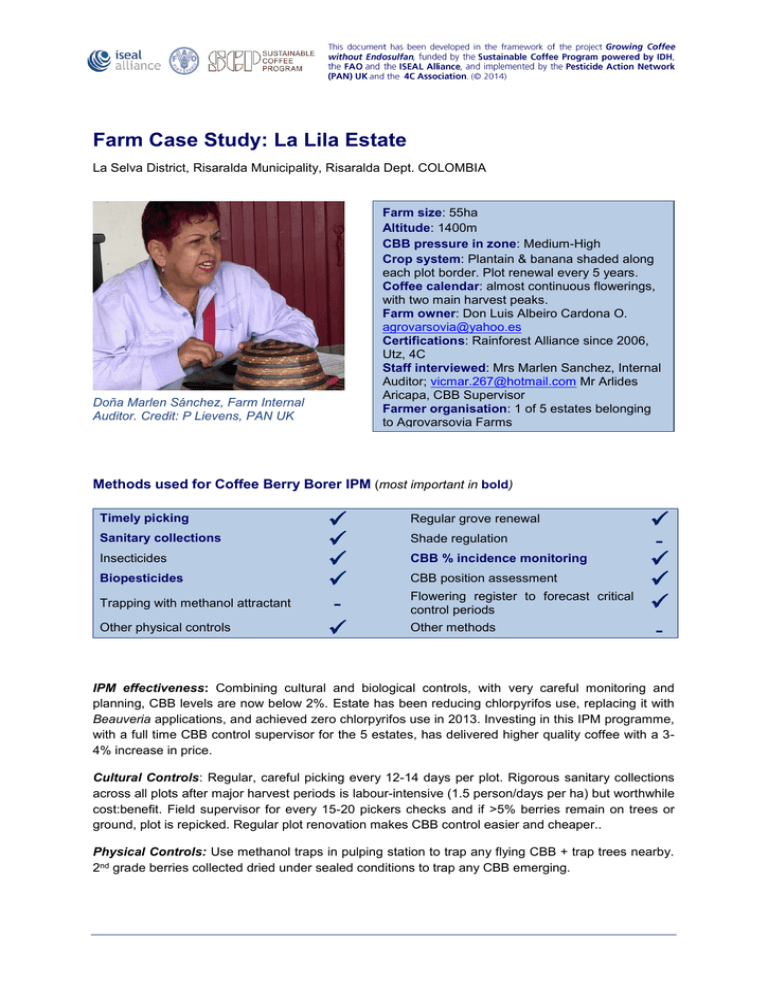
Farm Case Study: La Lila Estate La Selva District, Risaralda Municipality, Risaralda Dept. COLOMBIA Farm size: 55ha Altitude: 1400m CBB pressure in zone: Medium-High Crop system: Plantain & banana shaded along each plot border. Plot renewal every 5 years. Coffee calendar: almost continuous flowerings, with two main harvest peaks. Farm owner: Don Luis Albeiro Cardona O. agrovarsovia@yahoo.es Certifications: Rainforest Alliance since 2006, Utz, 4C Staff interviewed: Mrs Marlen Sanchez, Internal Auditor; vicmar.267@hotmail.com Mr Arlides Aricapa, CBB Supervisor Farmer organisation: 1 of 5 estates belonging to Agrovarsovia Farms Doña Marlen Sánchez, Farm Internal Auditor. Credit: P Lievens, PAN UK Methods used for Coffee Berry Borer IPM (most important in bold) Timely picking Sanitary collections Insecticides Biopesticides Trapping with methanol attractant Other physical controls Regular grove renewal Shade regulation CBB % incidence monitoring CBB position assessment Flowering register to forecast critical control periods Other methods - IPM effectiveness: Combining cultural and biological controls, with very careful monitoring and planning, CBB levels are now below 2%. Estate has been reducing chlorpyrifos use, replacing it with Beauveria applications, and achieved zero chlorpyrifos use in 2013. Investing in this IPM programme, with a full time CBB control supervisor for the 5 estates, has delivered higher quality coffee with a 34% increase in price. Cultural Controls: Regular, careful picking every 12-14 days per plot. Rigorous sanitary collections across all plots after major harvest periods is labour-intensive (1.5 person/days per ha) but worthwhile cost:benefit. Field supervisor for every 15-20 pickers checks and if >5% berries remain on trees or ground, plot is repicked. Regular plot renovation makes CBB control easier and cheaper.. Physical Controls: Use methanol traps in pulping station to trap any flying CBB + trap trees nearby. 2nd grade berries collected dried under sealed conditions to trap any CBB emerging. Monitoring and Decision-making: Sample 30 trees per plot, counting full size green berries only on 10 high, 10medium + 10 low branches. Sample each plot every 15 days. Dssect each bored berry from sampled branches to record borer presence and position (3 hours to monitor 5ha plot). Consider over 2% in more than 2 out of 30 trees sampled per plot as a hotspot, for extra control action. Weekly task planning with farm manager, field supervisors and CBB supervisor also evaluate whether control actions successful. Biopesticide Use: Product used: MicosPlag® (Orius) containing Beauveria + 2 other fungal agents, tank mixed with Trichoderma® (Orius) for disease control. Dose rate: 150-200g per ha in 300 litres for MicosPlag. Frequency: Usually 2 sprays per year in hotspots over 2% CBB. Cost per ha application: US$36.99 in product + US$35.51 in labour. More expensive than chlorpyrifos in immediate cost but many benefits, incl. longer-term control as Beauveria background levels increase, + lower costs in protecting worker health. Recommendations: Most important control method is really good picking practices, no ripe, overripe or dried berries left on trees. Workers need training how to pick properly and do sanitary collection. Staff need to understand when and why things might be going wrong in a particular plot. Neither insecticides nor biopesticides will deliver effective control if basics of good picking and postharvest clean-up are not done well. Well trained and dedicated staff, good organisation and good working relations, especially if aiming to reduce chemical use. For more details, see Marlen Sanchez’ presentation to Growing Coffee without Endosulfan project lesson-learning workshop, via project webpage http://www.4c-coffeeassociation.org/documentlibrary/documents.html Contacts Marlen Sanchez, email: vicmar.267@hotmail.com; agrovarsovia@yahoo.es
